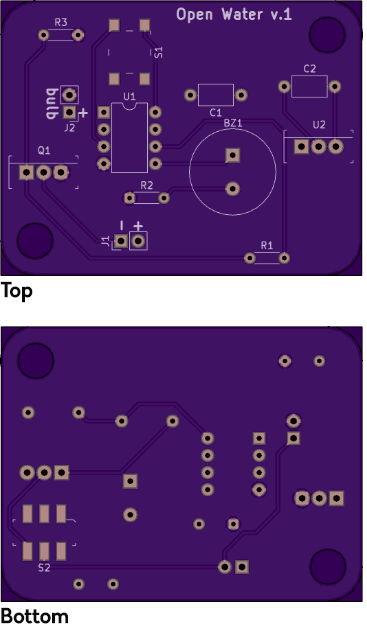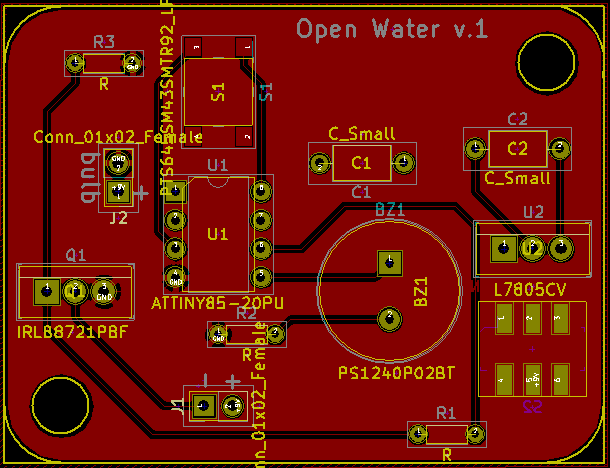I did a cost analysis for my board.
| Item | Price at 1 | Price at 100 |
| ATTINY 85 | 1.24 | 1.03 |
| 8 Pin DIP Socket | .18 | 0.11958 |
| 33 uF Capacitor | .23 | .0858 |
| 1 uF Capacitor | 1.54 | .9502 |
| 9v Battery Snap Connector | .97 | .89 |
| 5v Linear Regulator | .5 | .3184 |
| Bulb Holder | 3.77 | 1.48 |
| 9v Battery | 1.30 | 1.15 |
| MOSFET | .95 | .576 |
| Slide switch | .48 | .3858 |
| Push Button | .17 | .1457 |
| UV lamp | 7.72 | < 7.72 |
| Piezo transducer | .67 | .42 |
| Resistors | .25 | .1 |
| PCB board | 5.65 | .33 |
| Electronics Subtotal | 25.62 | 15.69 |
| Board housing | 1 | .5 |
| Total | 26.62 | 16.19 |
I went a little over budget for my prototype, but when I use the Digikey price at 100 for components, and use PCB way's estimate for boards, It is under 20 dollars!




Neat idea! Is the purification provided by strictly UV from the lamp, or is the focus on the generation of ozone? I've fiddled with the idea of miniaturized and high-throughput ozone generation, myself...using the generator for ozonolysis at work has always been an 'inspirational' process, anyway.